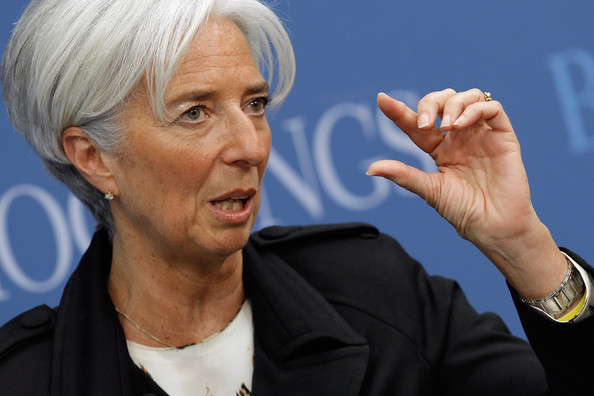The International Monetary Fund (IMF) has sliced Nigeria’s Gross Domestic Product (GDP) projection for this year to two per cent, down from the 2.3 per cent it had predicted for the country previously.
The fund stated this in its World Economic Outlook (WEO) update titled, “A Weakening Global Expansion,” released yesterday.
The multilateral institution attributed its decision to lower the country’s growth projection by 0.3 percentage point to softening crude oil prices.
The benchmark Brent crude price fell yesterday to $62.35 a barrel, while US crude futures were down 23 cents at $53.57 a barrel.
However, the IMF in the latest report anticipated that in sub-Saharan Africa, growth would pick up from 2.9 per cent in 2018, to 3.5 per cent in 2019, and 3.6 per cent in 2020.
It said, “For both years the projection is 0.3 percentage point lower than last October’s projection, as softening oil prices have caused downward revisions for Angola and Nigeria.
“The headline numbers for the region mask significant variation in performance, with over one-third of sub-Saharan economies expected to grow above five per cent in 2019–2020,” it explained.
Continuing, the report stated, “Global growth in 2018 is estimated to be 3.7 percent, as it was last fall, but signs of a slowdown in the second half of 2018 have led to downward revisions for several economies.
“Weakness in the second half of 2018 will carry over to coming quarters, with global growth projected to decline to 3.5 per cent in 2019 before picking up slightly to 3.6 per cent in 2020 (0.2 percentage point and 0.1 percentage point lower, respectively, than in the previous WEO).
“This growth pattern reflects a persistent decline in the growth rate of advanced economies from above-trend levels—occurring more rapidly than previously anticipated—together with a temporary decline in the growth rate for emerging market and developing economies in 2019, reflecting contractions in Argentina and Turkey, as well as the impact of trade actions on China and other Asian economies.”
It also noted that concerns about inflationary effects from earlier oil price increases and, in some cases, closing output gaps or pass through from currency depreciation had led central banks in many emerging market economies – Chile, Indonesia, Mexico, Philippines, Russia, South Africa, Thailand- to raise policy rates since the fall.
It also stated that foreign-currency sovereign credit spreads have edged up for most countries and risen substantially for some frontier markets, with investors generally lowering exposure to riskier assets, while emerging market economies experienced net capital outflows in the third quarter of 2018.
According to the IMF, “As of early January, the US dollar remains broadly unchanged in real effective terms relative to September, the euro has weakened by about two per cent amid slower growth and concerns about Italy, and the pound has depreciated about two per cent as Brexit-related uncertainty increased. In contrast, the Japanese yen has appreciated by about three per cent, on higher risk aversion.
“Several emerging market currencies—including the Turkish lira, the Argentine peso, the Brazilian real, the South African rand, the Indian rupee, and the Indonesian rupiah – have staged recoveries from their 2018 valuation lows last August to September.
“Emerging market and developing economies have been tested by difficult external conditions over the past few months amid trade tensions, rising US interest rates, dollar appreciation, capital outflows, and volatile oil prices. In some economies, addressing high private debt burdens and balance-sheet currency and maturity mismatches will require strengthening macro-prudential frameworks.
“Exchange rate flexibility can complement these policies by helping to buffer external shocks. Where inflation expectations are well anchored, monetary policy can provide support to domestic activity as needed.
“Fiscal policy should ensure debt ratios remain sustainable under the more challenging external financial conditions. Improving the targeting of subsidies and rationalising recurrent expenditures can help preserve capital outlays needed to boost potential growth and social spending to enhance inclusion.
“For low-income developing countries, concerted efforts in these areas would also help diversify production structures (a pressing imperative for commodity-dependent economies), and their progress toward the UN Sustainable Development Goals.”













